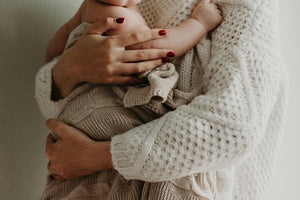If someone asked you what stage of life you were in, what would you say?
Many of us think of life stages simply as childhood and adulthood. Some women may think of menopause. But can our lives really be summed up in these two or three basic categories?
Throughout our lives, we experience drastic changes and important milestones. From the day we are born, we are constantly learning, growing and developing, and so is our body and its hormone balance.
Similarities and differences of hormone cycles
Relatively speaking, men and women have the same basic hormones in their bodies - but the levels differ, often enormously, and the way the levels change is also very different.
Men and women both have hormonal cycles, but a man's cycle spans a period of 24 hours, while a woman's cycle spans an average of 28 days - the menstrual cycle.
Because of the normal fluctuations during the menstrual cycle, women often experience physical symptoms that are much less common in men, such as mood swings, breast tenderness, migraines and water retention.
The female cycle is much more complex than the male cycle, which means that a woman is likely to feel different week to week depending on where she is in her cycle, compared to men who feel different at different times of the day.
In this article, we want to shed light on the stages of a woman's life and describe them beyond the 28-day cycle.

Infancy and childhood
Infancy and childhood are considered the first two stages of a girl's life. While important milestones such as walking and talking are reached, hormonal influences are minor.
Puberty and adolescence
Puberty is the time when most children and their parents notice changes in their bodies and brains. For girls, it is often associated with their first period. On average, the period starts at age 12-13. However, this varies greatly when factors such as ethnicity, social class, and diet are considered. 200 years ago, the average age was 16.5 years. In Senegal and Nepal, this is still the case. Regardless of the age at which periods start, it usually takes a few years for the body to get a regular period. The first periods are often light and irregular, causing little cramping. In the mid teens, moodiness, cramps and migraines are added. Bleeding becomes heavier and more regular. In general, the length of the cycle changes with age.
Interesting fact:
Did you know that most women menstruate for about 40 years during their lifetime? (By the way, that's about four times the average length of a marriage).
Adulthood
Many women pay attention to their habits, for example, a healthy diet, when they are pregnant. This is good and right. However, lifestyle is important for women's health, regardless of their desire to have children.
Good advice is to stick to general recommendations, such as being active and choosing complex carbohydrates, high-quality fats and lean protein. However, it is even better if women receive individualized recommendations and additional guidance, such as with the Hello Inside app for blood glucose monitoring.
As women approach forty, they may find that their cycle begins to do its own thing. 28 days, 40 days, 21 days, 75 days, etc.
Bleeding may become heavier or almost stop during the first two days.
Welcome to the perimenopause!
(Peri-)Menopause
Menopause is an experience that all women go through at some point in their lives. It is called menopause when a woman has not had a period for 12 months.
After that, women are considered postmenopausal, which can last up to a third of their lives. Before menopause is periomenopause.
This can last from a few months to many years, but usually it is 7-8 years.
Unlike menopause, it is not always obvious when a woman is going through perimenopause, and symptoms may be attributed to something else.
In perimenopause, women increasingly get periods in which they do not ovulate. These are called anovulatory cycles.
During perimenopause, sex hormones do not decline gradually and linearly so that a woman can prepare for them. Rather, they fluctuate during their decline. This ebb and flow contributes to the often unpredictable physiological symptoms women experience during this time: Hot flashes, headaches, sleep disturbances, low libido and low mood.
However, not all women suffer from these symptoms, and some women get through menopause just fine. Until menopause, however, women are relatively well protected against heart disease - similar to men at the same age. After menopause, however, the risk of heart disease increases. This is also the time when the traditional risk factors for heart disease in women begin to move in the wrong direction:
- Women move less after menopause.
- Women often gain weight.
- The distribution of body fat shifts from the hips and buttocks to the abdomen.
- Blood pressure increases more in women after menopause than in men.
Now you know how the female body changes and know the cornerstones of women's health and fertility. Much of this can be influenced by a woman's own lifestyle, and controlling her blood sugar is beneficial at every stage of life. This is also a good reason for you to check your blood sugar levels regularly, as your hormones, microbiome, and lifestyle factors and influences change over time - and so does your health and what your body actually needs. We recommend you check your body and do some blood sugar experiments about once a quarter.





